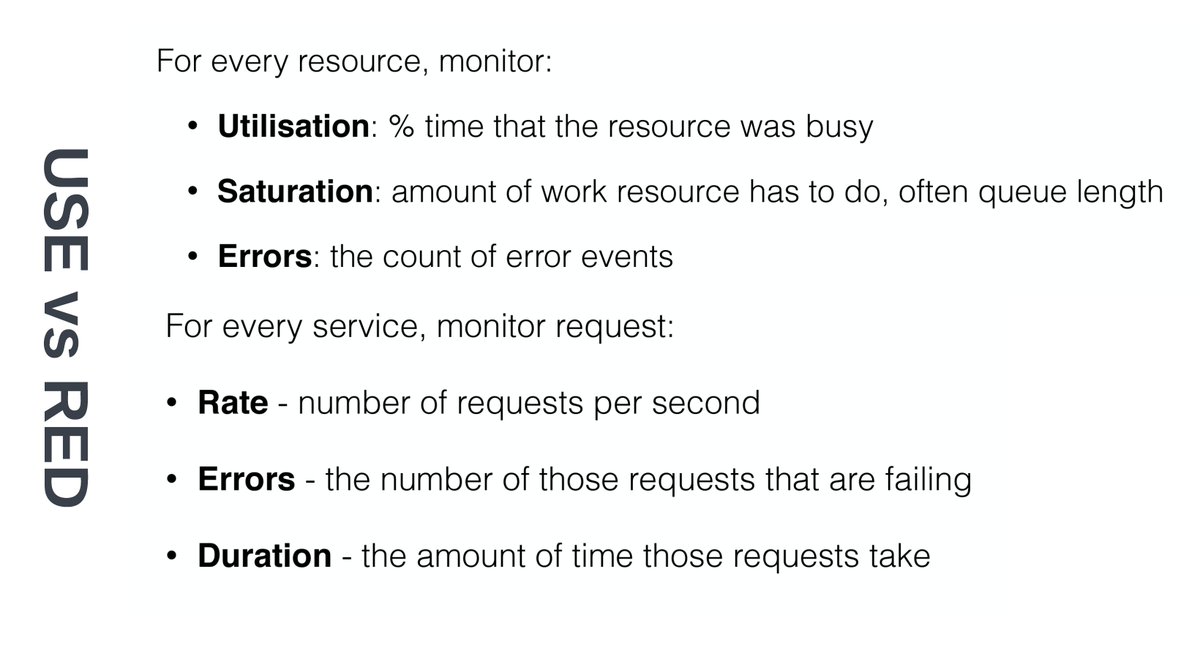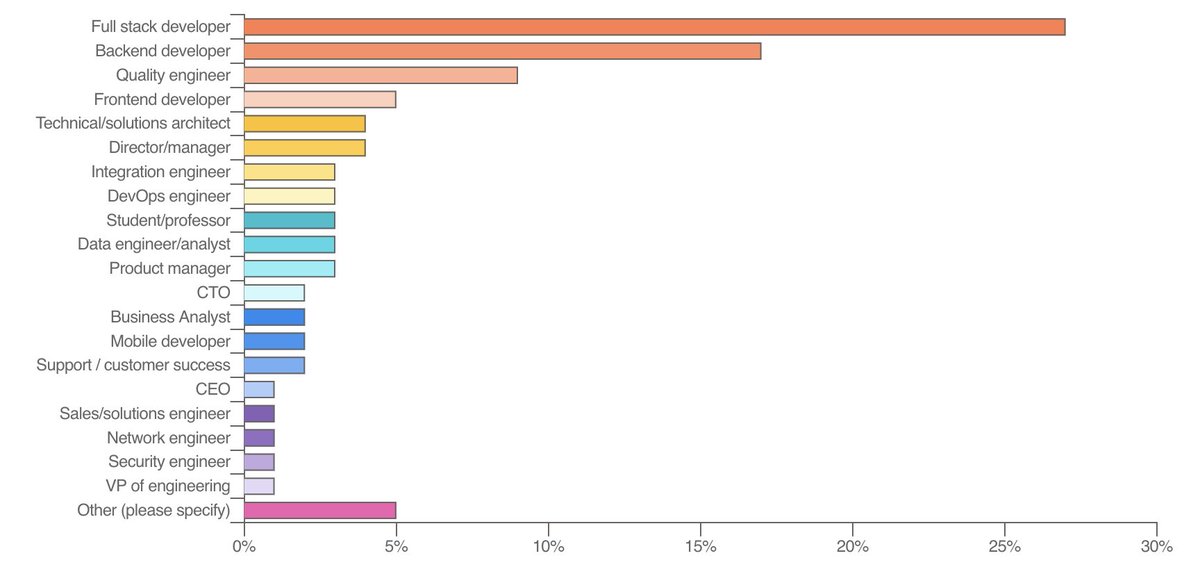
Begin observing the performance characteristics of apps before the production rollout using Google's four golden signals. #ShiftLeft
ibm.com/garage/method/…
ibm.com/garage/method/…

The RED method takes an externally-visible (request-driven) view of the workload. For every workload, it checks request rate, error-rate, time each request takes.
weave.works/blog/the-red-m…
weave.works/blog/the-red-m…

The USE method takes an internal, resource-centric view of the workload. For every resource, it checks utilization, saturation, and errors. The goal is to understand how these resources behave in the presence of the load.
brendangregg.com/usemethod.html
brendangregg.com/usemethod.html

➡️ Start with RED and treat the services as a black box. Best for request-driven apps.
➡️ Combine with USE to check stateful/non-request-based systems and components as white box.
➡️ If none helps, check logs and traces too.
copyconstruct.medium.com/logs-and-metri…
➡️ Combine with USE to check stateful/non-request-based systems and components as white box.
➡️ If none helps, check logs and traces too.
copyconstruct.medium.com/logs-and-metri…

• • •
Missing some Tweet in this thread? You can try to
force a refresh



















